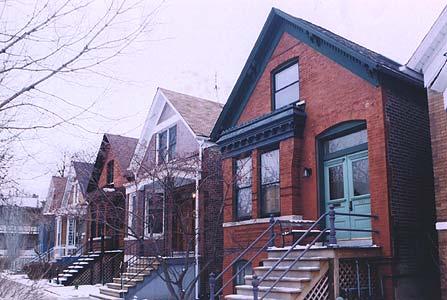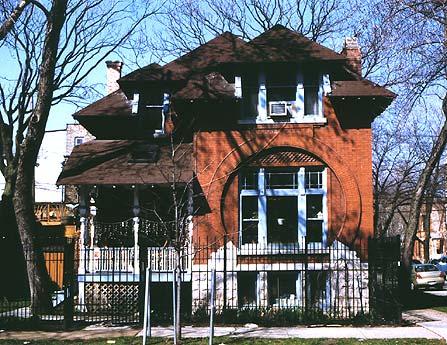Ukrainian Village District
 |
|
Address: Irregular boundaries roughly bounded by Haddon, Damen, Rice and Western
Year Built:
Architect: Various
Date Designated a Chicago Landmark:
December 4, 2002
|
 The Ukrainian Village District contains an excellent cross-section of residential building types that provides a visual history of immigration settlement on Chicago's Near West Side. Together, they form an important residential streetscape, one that tells the story of German, Polish, and, ultimately, Ukrainian immigrants who settled in the area throughout the late 1800s and early 1900s. An extremely well-preserved collection of Worker's Cottages, two- and three-flats, single family residences, and large apartment buildings, nearly one out of every three of the buildings in the district was developed by the early influential Chicago real estate developer William D. Kerfoot. The first real estate developer to reestablish his business after the Great Fire in 1871, Kerfoot became the embodiment of the "I Will" spirit of Chicago. He reopened his office the day after the fire ended with a sign on his door reading: "W.D. Kerfoot. All gone but, wife, children and energy." These unpretentious residences feature distinguished workmanship and finely crafted details.
The Ukrainian Village District contains an excellent cross-section of residential building types that provides a visual history of immigration settlement on Chicago's Near West Side. Together, they form an important residential streetscape, one that tells the story of German, Polish, and, ultimately, Ukrainian immigrants who settled in the area throughout the late 1800s and early 1900s. An extremely well-preserved collection of Worker's Cottages, two- and three-flats, single family residences, and large apartment buildings, nearly one out of every three of the buildings in the district was developed by the early influential Chicago real estate developer William D. Kerfoot. The first real estate developer to reestablish his business after the Great Fire in 1871, Kerfoot became the embodiment of the "I Will" spirit of Chicago. He reopened his office the day after the fire ended with a sign on his door reading: "W.D. Kerfoot. All gone but, wife, children and energy." These unpretentious residences feature distinguished workmanship and finely crafted details.
|
|

|
 Districts
Districts


| 1 |
Streetscape of the 2100 block of W. Thomas St., photo by CCL, 2002 |
| 2 |
1124 N. Damen Avenue, photo by CCL, 2002 |
| 3 |
Streetscape of the 1100 block of N. Hoyne Ave., 2002, photo by CCL
|
| 4 |
Office of W.D. Kerfoot rebuilt on the ruins of the Chicago Fire
|
| 5 |
St. Nicholas Ukrainian Catholic Cathedral, photo by Matt Crawford, CCL, 2006
|
| 6 |
St. Nicholas Cathedral roofline detail, photo by Matt Crawford, CCL, 2006
|
|